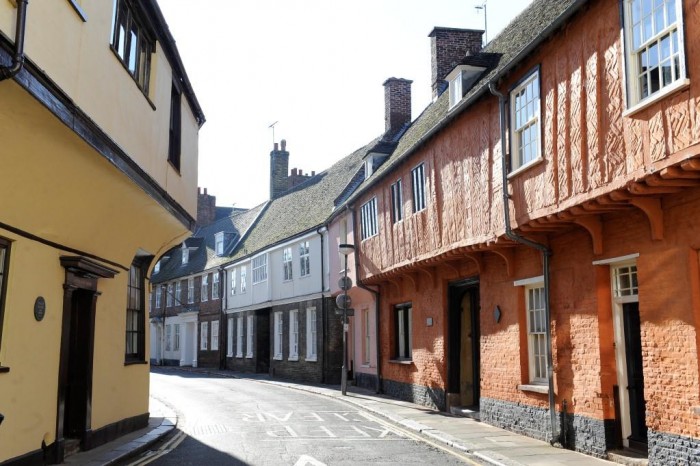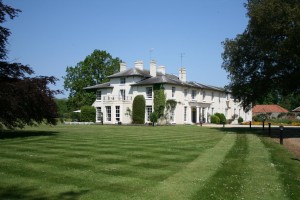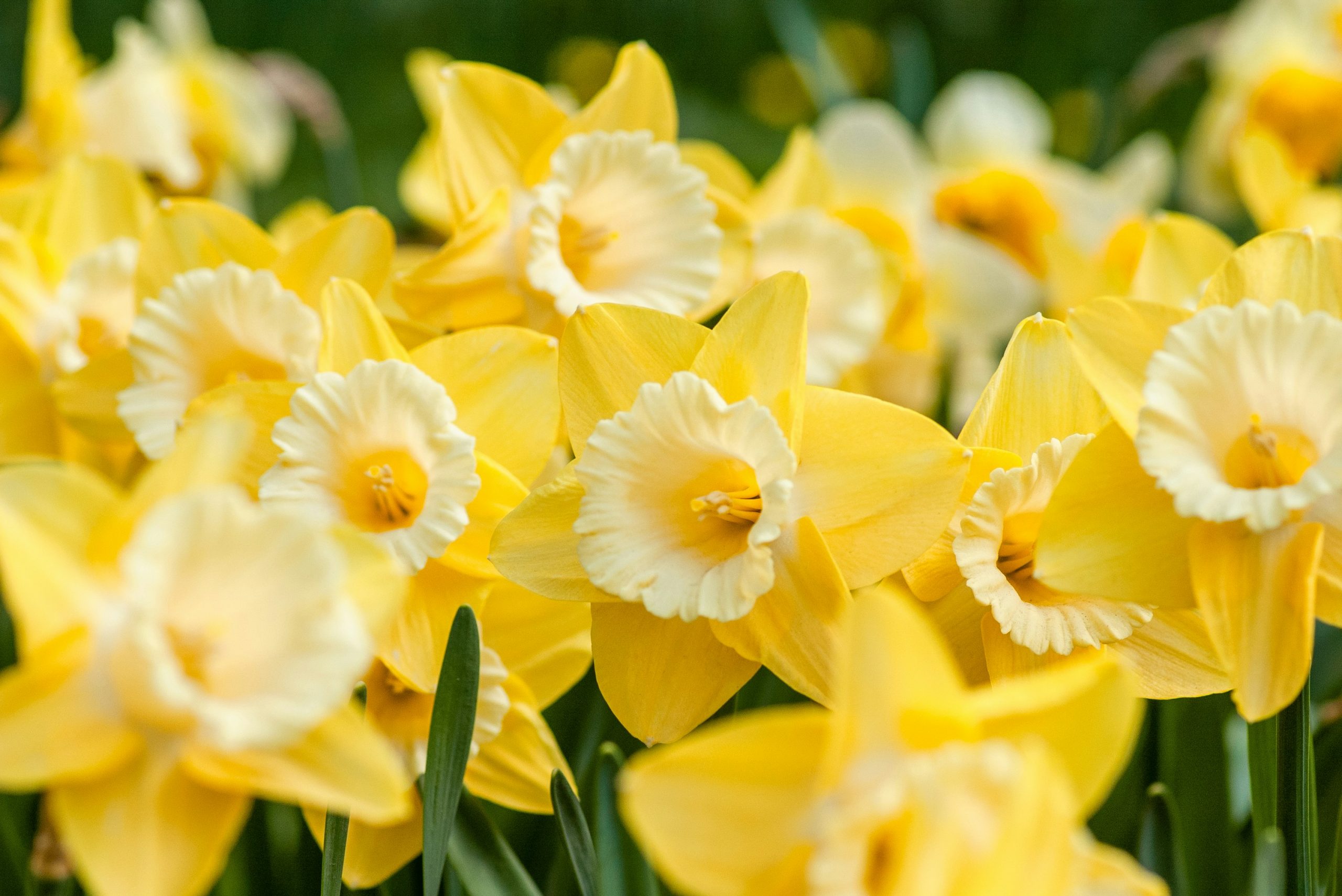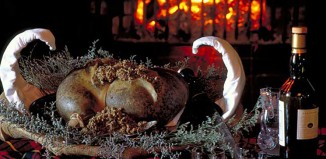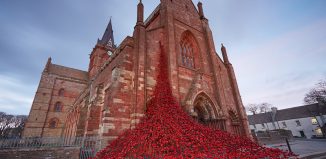A historic walk around King’s Lynn
Ed Hutchings guides us around historic King’s Lynn, Norfolk
In the early eighteenth-century Daniel Defoe described King’s Lynn as: “Beautiful, well-built and well-situated”.
Astute as this observation was, the town has been recognised as such for four centuries. During the 14th century, Lynn – as it is known locally – was among England’s most significant ports. Sea trade with Europe was dominated by the Hanseatic League of ports; the transatlantic trade and the rise of England’s western ports would not begin until the 17th century. Many relics of this golden age survive and Lynn has perhaps one of the greatest concentration of listed buildings in the country.
Located on St. Margaret’s Lane, the Hanseatic Warehouse is the only surviving Hansa building in England. It was constructed in 1475 following the Treaty of Utrecht, allowing Hansa to establish a trading depot in Lynn for the first time. It was used as such until 1751, by which time the river had receded. It was then sold to Lynn merchant Edward Everard for £800 (£160,000 in today’s money). He added the Georgian town house at the east side of the building which is now known as St. Margaret’s House, after the nearby church. It was converted into offices in 1971. Appropriately, the building is also known as the “Kontor” – a Scandinavian term meaning “office”.
In spite of much poor modern building, Lynn remains the most beautiful town in Norfolk. It boasts three fine medieval Gothic churches and one Victorian one. In the natural centre of the town, King’s Lynn Minster (otherwise known as St Margaret’s Church) is actually a Norman foundation, with some Norman work at the west end. It has two west towers and once had a spire, until it fell in 1741. Round the churchyard are attractive iron railings and gateways. The interior, though much restored at many periods, retains some marvellous features. Most famous are the two great Flemish brasses, a tribute to Lynn’s prominence in the continental trade. There are very fine 14th century screens, a handsome Georgian pulpit with sounding board and a Snetzler organ of 1754. The lofty reredos in the sanctuary is by the Victorian Gothic Revival architect George Frederick Bodley.
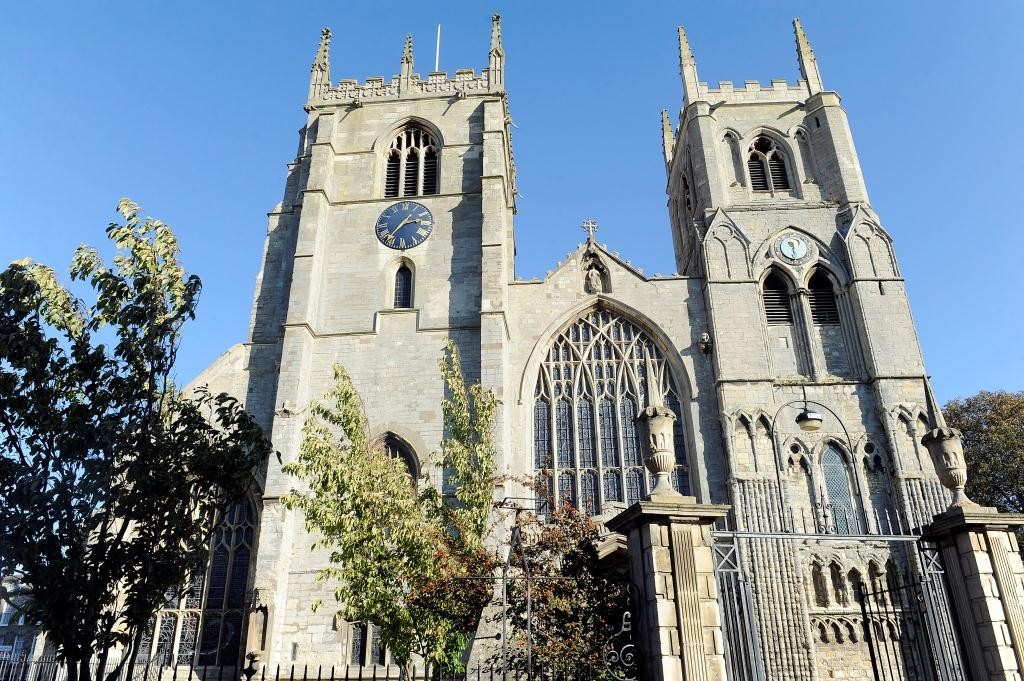
Opposite the Minster, across the Saturday Market Place, the town hall of Lynn has stood since the early 15th century, when the Guildhall of the Holy Trinity was built. It is the most prominent feature of the town hall today with its steep arched roof, large window and chequered patterned exterior. The building was enlarged in 1624, when an extension in the same chequered style was added which now forms the main entrance to the town hall. The arms of Elizabeth I can be seen above the main window on this building, having been removed from St James’ Church in the same year.
A short walk down Queen Street brings one to The Customs House, one of King’s Lynn’s most celebrated landmarks.
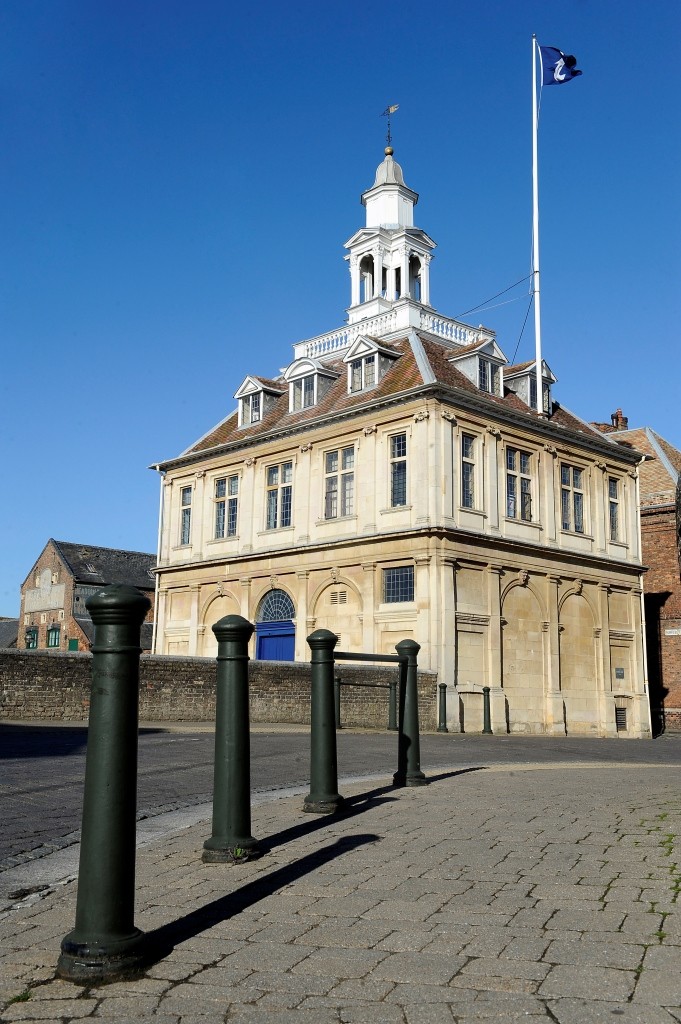
It was not the first built for the town; an earlier one was completed in 1620 on the site where the Hogge Mansion is situated (and occupied by Barclays Bank). However, this was found too small and as a result a larger one was needed. St George’s Guildhall (below) was used in the intervening years. Initially, Customs occupied only the top floor and the ground floor was used by merchants for trading. Nevertheless, the latter were not happy at being distanced from the Tuesday Market Place and, by 1717, the former had occupied the entire building. Thus three centuries later, while the building is no longer used by Customs, it remains a gateway to the town and, equally importantly, it houses the town’s Tourist Information Office (below).
Continuing on the same trajectory from Queen Street takes one down King Street – a most elegant thoroughfare lined with fine Georgian buildings. John Betjeman, an admirer of Lynn in general, commented that it was one of the finest walks in England. On the left, just after Ferry Lane, St George’s Guildhall dates from 1410 and is one of the oldest surviving guildhalls in England. It was a theatre in Elizabethan times and is now part of the much-loved King’s Lynn Arts Centre.
King Street eventually deposits one in the handsome Saturday Market Place. The facade of the Corn Exchange, originally built in 1854, is a testimony to the glory of Victorian architecture. The hall itself is a simple brick rectangle with a glazed roof supported by delicate wrought-iron trusses. Contrary to popular legend, the statue above the magnificent facade is that of Demeter, Greek goddess of the harvest, and not Margaret Thatcher. The imposing Duke’s Head hotel opposite is reputedly haunted.
Continuing on from the square brings one to the town’s other ecclesiastical delight. St Nicholas is not strictly a parish church, but it would be pedantic to say otherwise. It was built as a chapel of ease to St Margaret’s, which shows what a place Lynn once was. The fine tower is Early English, with an 1871 spire by George Gilbert Scott, but the main church is of 1419, with a huge west window of eleven lights, nine lights in the east window and a fine angle roof. Light floods into the spacious interior. The two-storey south porch is marvellous: lierne-vaulted and with bosses. The ledger stones include one to Robinson Crusoe. This is the church of the Lynn merchants and is full of their monuments.
The gabled 17th century building south of the churchyard is somewhat eerily known as the Exorcist’s House and was once attached to St Nicholas. The office of “exorcist” in the past was one which a Catholic priest could hold as he progressed up the church career ladder. It also maintains a reputation for being haunted; legend has it that a previous occupant dabbled in the black arts.
Sitting in the centre of The Walks, Lynn’s main urban park, lies the Red Mount chapel. Also known as “Our Lady’s Chapel” it is a remarkable building in that it is architecturally unique. Built in the 15th century by Robert Corraunce on instructions from the Prior of Lynn to contain a relic of The Virgin, it was also used by pilgrims on their way to Walsingham. The inner core is divided into three storeys and there is an additional cross-shaped ashlar building in Ancaster stone on top.
A short distance away, the Greyfriars Tower is the only remaining part of the Franciscan monastery that existed on this site. It is one of only three surviving Franciscan monastery towers in England and is considered to be the finest. Following the dissolution of the monasteries by King Henry VIII all such coenobiums were demolished. The tower at Lynn remained because it was considered to be a useful seamark by sailors entering the town, still being clearly visible on the town’s skyline to this day.
During the late Middle Ages, Lynn’s merchants prospered through importing Scandinavian fish, Baltic timber and French wine, while exporting corn, salt and wool. During the 1950s and 1960s, much of the old centre was demolished to make way for commercial development. Diamonds remain in the rough.
THOMAS BAINES
From King’s Lynn to the Cape of Good Hope
Born in King’s Lynn in 1820, Thomas Baines was an artist, explorer, naturalist and author who spent most of his life in Southern Africa. In 1842 love of adventure took him to Cape Colony, where he served as an artist during the Cape Frontier Wars (1850 -1853). His success as an artist led to his joining an expedition to Northern Australia in 1855 and an invitation to take part in a Zambezi expedition under David Livingstone in 1858. In 1861 Baines accompanied the British hunter and explorer James Chapman in his travels from South West Africa (now Namibia) to Victoria Falls, a journey upon which his drawings and his book ‘Explorations in South-West Africa’ (1864) were based.
With his fame established, he opened a studio in London in 1865. Returning to Africa in 1868, he led an expedition to explore the goldfields of Matabeleland, where in 1870 he won a mining concession from the Ndebele King, Lobengula, over an extensive area of neighbouring Mashonaland, later acquired by Cecil Rhodes. Baines’s accurate map, scientific data, and illustrations of the scenery and people were published posthumously in ‘The Gold Regions of South-Eastern Africa’ (1877).
Thomas Baines died in Durban in 1875.
The excellent Lynn Museum has a large collection of his artwork, along with sketches and ethnographic objects mostly donated in the 1860s by the explorer himself. Contact the Museum for details (01553) 775001.
PLAN YOUR VISIT
GETTING THERE
By car, King’s Lynn is easily accessed via the M11, A10 or A1 from the south and via the A47 and A17 from the Midlands and the North. Plan your route: www.theaa.com/route-planner
By train, Govia Thameslink Railway operates hourly services from London King’s Cross to King’s Lynn (half hourly at peak times) with average journey time 1 hour 40 minutes. (East Midlands Trains offer connecting services from the Midlands and the North via Peterborough and Ely).
National rail enquiries: 0845 7484950; www.nationalrail.co.uk
WHERE TO STAY
Set on 30 acres of parkland, the upscale Congham Hall is 7 miles from King’s Lynn, 4 miles from The Sandringham Estate and 5.3 miles from King’s Lynn Golf Club. Plush guestrooms, some with monsoon showers, are individually decorated in country-chic style. All rooms come with flat-screen TVs, free Wi-Fi, DVD players and high-end linens. Amenities include a restaurant serving a menu comprised of locally sourced ingredients, an outdoor hot tub and gardens. The sleek, full-service spa includes an indoor pool with water jets, saunas, a steam room and treatment rooms. Address: Grimston, Kings Lynn, Norfolk PE32 1AH; 01485 600250; www.conghamhallhotel.co.uk
WHERE TO EAT
The pleasant Rathskeller Bistro is visible from the quayside; the indoor seating areas affords great views of the river and the exposed timbers to the roof, whilst the outdoor seating area, in the warm weather, takes full advantage of the riverside location. Lunch and dinner are served daily, snacks and drinks from 10am and food from noon–9.30pm. On Sundays roasts are served from noon–6pm.
Address: 1 South Quay, King’s Lynn, Norfolk, PE30 5GN; 01553 773713; www.therathskeller.co.uk
WHERE TO SHOP
Off-centre lanes like Norfolk Street, Tower Street and St James’s Street offer smaller, more specialist shops. As you may have gathered, markets are found in the town on Tuesdays and Saturdays.
DON’T MISS
True’s Yard Museum – a fascinating slice of social history. It is an independent museum run almost entirely by volunteers and depicts the story of the old North End fishing quarter of King’s Lynn. Most of the North End was knocked down in the Slum Clearances of the 1930s and 1960s. Open from 10am to 4pm, Tuesday to Saturday. 01553 770479; www.truesyard.co.uk
MORE INFORMATION
The King’s Lynn Tourist Information Centre is located in The Custom House on Purfleet Quay. It is open daily from 10am – 5pm in summer (noon-5pm on Sundays) and from 10.30am-4pm in winter (noon-4pm on Sundays). 01553 763044

